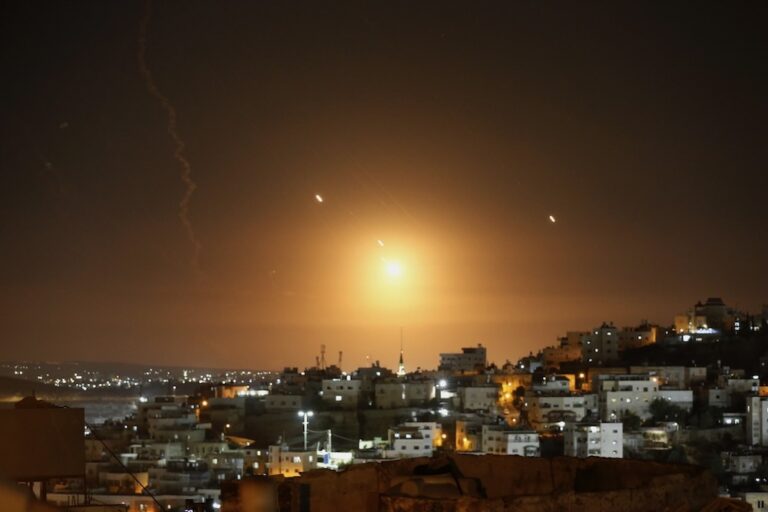CPJ called on the authorities to lift the bans and to allow international reporters to return to the country.
Iran censors newspapers amid unrest
(CPJ/IFEX) – New York, June 18, 2009 – With street demonstrations continuing in Tehran, Iranian authorities expanded censorship, banning the publication of two newspapers. The Committee to Protect Journalists called on the authorities to lift the bans and to allow international reporters to return to the country.
The Tehran-based daily Hayat e No said in a statement posted on its Web site that a representative of the Ministry of Culture and Islamic Guidance prevented its publication on Wednesday. The front-page headline was about the recent unrest in the country, according to a copy of the censored issue that was posted online.
Aftab e Yazd, another Tehran-based daily, said in a statement posted on multiple Web sites that the paper did not go to print on Wednesday after officials from the ministry said it could not publish a picture of the defeated reformist candidate, Mir-Hossein Mousavi, on the front page. The newspaper posed two copies of the same issue on its Web site: one of the censored copy and another of the original.
“This kind of censorship is the crudest form of repression and the hallmark of authoritarian governments,” said CPJ Middle East and North Africa Program Coordinator Mohamed Abdel Dayem. “Censorship often precedes broader restrictions on civil and political rights, and even a violent crackdown. For this reason it is vital that the press continue to operate in Iran.”
Iranian authorities have imposed broad restrictions on the press since unrest swept the country in the aftermath of Friday’s [June 12] disputed elections. They have jammed satellite signals, limited the movements of international reporters and expelled them from the country.
Other newspapers like Khabar, Asrar, and Hambastegy also didn’t appear on newsstands, according to Khabar’s Web site. The newspaper said that it did not go to print on Wednesday because of technical problems. It remains unclear whether Asrar and Hambastegy failed to publish because of censorship. The Web sites of both print newspapers remain inaccessible, CPJ research shows. Several reformist Web sites have been blocked since Friday, according to CPJ research.
Supporters of presidential candidate Mir-Hossein Mousavi’s continued their protests in several Iranian cities, challenging the official results of the Friday election that gave a landslide victory to incumbent President Mahmoud Ahmedinejad.
The Ministry of Culture and Islamic Guidance has prevented foreign journalists in Iran from covering street protests and refusing to extend visas for visiting reporters. Several foreign journalists, who had been invited by the government to cover the elections, have left Iran as authorities have rejected to extend their visas. Others were expelled even before their visas expired.
YouTube, Twitter, DailyMotion, and Facebook have been blocked inside Iran. On Saturday, mobile phone service was interrupted but it was restored the next day, while SMS, or short message service, has been disabled since Friday.
The Committee to Protect Journalists is a New York-based, nonprofit, nonpartisan organization dedicated to defending press freedom around the world.


